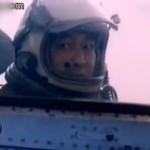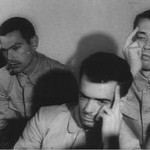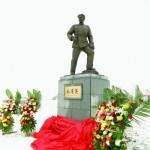A reporter in China feels the last year has been a good one for the DPRK (in economic terms). I would take issue with some parts of his article (posted below), but the time I can devote to blogging is pretty slim until the end of January (field exam for school). You are smart enough to form your own opinions in the meantime!
Few people know that the Democratic People’s Republic of Korea (DPRK) was a relatively prosperous country in the late 1970s and 1980s. In 1979, its grain output reached 9 million tons, increasing to 10 million tons in 1984. In fact, it used to be a rice exporter during that period.
The DPRK economy started declining in the 1990s when a lot of its resources were diverted to defense and heavy industries, seriously hindering the development of agriculture and light industries. Besides, environmental destruction damaged the rich soil, making it impossible for the country to return to its past agricultural glory.
As a result, the DPRK’s economy registered negative growth in the late 1990s, and didn’t improve until 2000.
In 2009, when the international community was still worried over its second nuclear test in May, the DPRK launched economic development campaigns such as the “150-day battle”, and vowed to make the year a turning point toward economic strength and prosperity.
Let’s see the changes in the country after more than one year of the campaigns.
This year has seen many changes in the DPRK. New technologies such as computerized numerical control have been introduced to help light industries, and more cash crops grown to raise funds or exchange them with other countries for grain.
The year has seen a remarkable increase in the number of neon lamps and lights on Pyongyang’s roads and in residential buildings. Thanks to the construction of hydropower stations such as the Huichon Power Station in Chagang province and Wonsan Youth Power Station in Kangwon province, Pyongyang and Kangwon’s Wonsan city now get relatively stable electricity supply.
A drastic change in the DPRK’s economy this year is the drop in the price of rice. The DPRK government has lowered the price of rationed rice from 46 won to 24 won a kg.
In the open market, rice price dropped from 2,000 won a kg in 2009 to 1,500 won a kg in September this year. In November, it fell further to 900 won a kg in Pyongyang’s markets.
The availability of consumer goods has increased both in variety and quantity because of more and improved supply channels. Residents now rely on goods rationed by the government, as well as those available in markets and convenience stores. More special shops are selling necessities, although they cost more than in ration shops.
Contrary to some experts’ prediction, currency reform has not created a crisis or led to economic depression in the country. In 2009, the exchange rate of the yuan to the won was 1:500. This year it is 1:200, more than doubling the purchasing power of people in the DPRK.
Moreover, even though the currency reform has shrunk people’s fortunes, most of them have not suffered economic shocks.
Several facts prove that the living standards in the DPRK have improved this year. The supply of DPRK-made beer has increased, in variety and volume both, and the country may not need to import beer anymore. A bottle of rice beer costs about 600 to 700 won. More restaurants have opened in cities, and bicycles have become common in places where they were rare to find earlier.
Even the number of cell phone users has increased – to at least 80,000 – though the 200,000 to 600,000 won needed to use a mobile phone is still high and the handsets and service need to be improved.
In more sense than one, this year has a special meaning for the DPRK, not least because it chose its next generation leader. The year marks the 65th anniversary of the ruling Labor Party, too.
Though the DPRK’s claim of building an economically prosperous country in two more years may be exaggerated, we can see some obvious changes in the country. It is opening up to the rest of the world and shifting its attention from defense to people’s welfare.
But there is no denying that the DPRK now wants to develop the economy. This will become clearer if one has followed the country’s official media. During the new year’s comment, the Korean Central News Agency used the words “improving people’s lives” 16 times, a rarity earlier. Even in 2009, the words were used only once.
The DPRK tried to increase people’s income in 2002 but failed because it didn’t have enough goods then. The high inflation that followed made things worse.
Though last year’s currency reform didn’t raise people’s income directly, it has defused the currency bubble to a large extent. And this time the supply of more goods to meet rising demands has helped the country to move forward.
The currency reform, despite some negative effects, has not only improved people’s living conditions, but also built a sound financial base for the DPRK to welcome international economic cooperation in the near future.
If time and conditions allow, economic interaction could help the DPRK maintain peace in the region. The possibility of the DPRK economy suffering a 2002-like setback, however, cannot be ruled out.
Its weak agriculture and light industries are still not in a condition to support development in the long term. Plus, it has to depend on imports for 80 percent of consumer goods in the short term.
But 2010 is still a special year for the DPRK, for it is standing at a crossroads from where it can start attracting investment because capital now holds the key.
That means opportunities for China. The market for consumer goods such as light bulbs and cell phones are expanding in the DPRK, while rising demand for other products has created a larger profit space. Besides, the DPRK could open its resource markets to raise funds.
The DPRK’s economic development is good for China’s security and overall economic cooperation in the entire region. The international community should use this opportunity to help the DPRK open up to the rest of world. That would go a long way in resolving the Korean Peninsula nuclear issue than flexing of military muscles.



